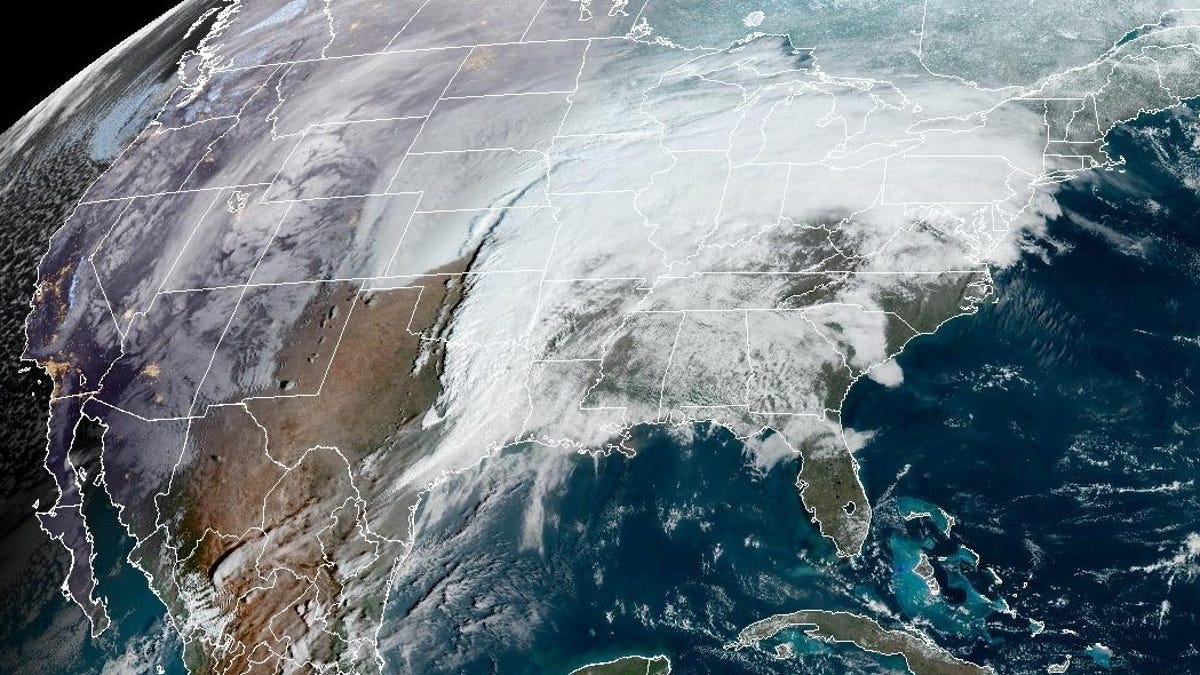
A nationwide winter storm as seen from NOAA’s GOES-East satellite on Wednesday.
NOAA/NESDIS/STAR/GOES-EAST
Denver is gritting through multiple to 40- to 50-degree (Fahrenheit) temperature swings that will take the Mile High City from spring weather earlier this week to well below freezing and back to balmy this weekend.
A massive winter storm stretching nearly across the continent from California to New York is dumping feet of snow on the northern plains, shutting down highways and canceling flights by the hundreds.
In Denver, it’s all part of a pattern of weather whiplash that’s growing more familiar. In December, just a few days before Christmas, it saw temperatures plummet by over 40 degrees in just a few hours and a record 75 degrees from one day to the next.
Scientists say this kind of seesawing from one weather extreme to another can be tied to climate change. In particular in the US there seems to be a connection to the rapid warming of the Arctic, which is changing the behavior of the jet stream that itself impacts weather to the south in the lower 48 states.
In addition to Denver’s wild rides over the last year, researchers are looking into apparent cases of weather whiplash in places like California, Texas, New Mexico and Montana where exceedingly dry conditions have been followed by extreme rainfall and flooding or vice versa.
In the case of New Mexico, where I live, months of drought and dryness helped trigger the worst wildfire season in the state’s history in the spring of 2022. Then in June, the rain seemed to start in an instant and remained above normal levels for months, leading to fatal floods in burn-scarred areas. It was a lot.
Blowing snow is drastically reducing visibility on the roadways in South Dakota.
This video was taken from the passenger seat by @SDHighwayPatrol. Stay off the roads if possible as a potent winter storm swipes the region. #SDwx pic.twitter.com/x3TkH3LU8w
— WeatherNation (@WeatherNation) February 22, 2023
The jet stream’s fingerprints are also all over the current chaos in the US. What meteorologists are calling an “extreme” jet stream is bringing record cold temperatures from the Arctic to the west and north, while also holding space for record high temperatures in the southeast at the same time.
If it’s wintery where you are, pay attention to local forecasts, stay warm and stay off the roads if you can. Beyond that, now more than ever you should be able to just wait a while for the weather to change, often dramatically.
